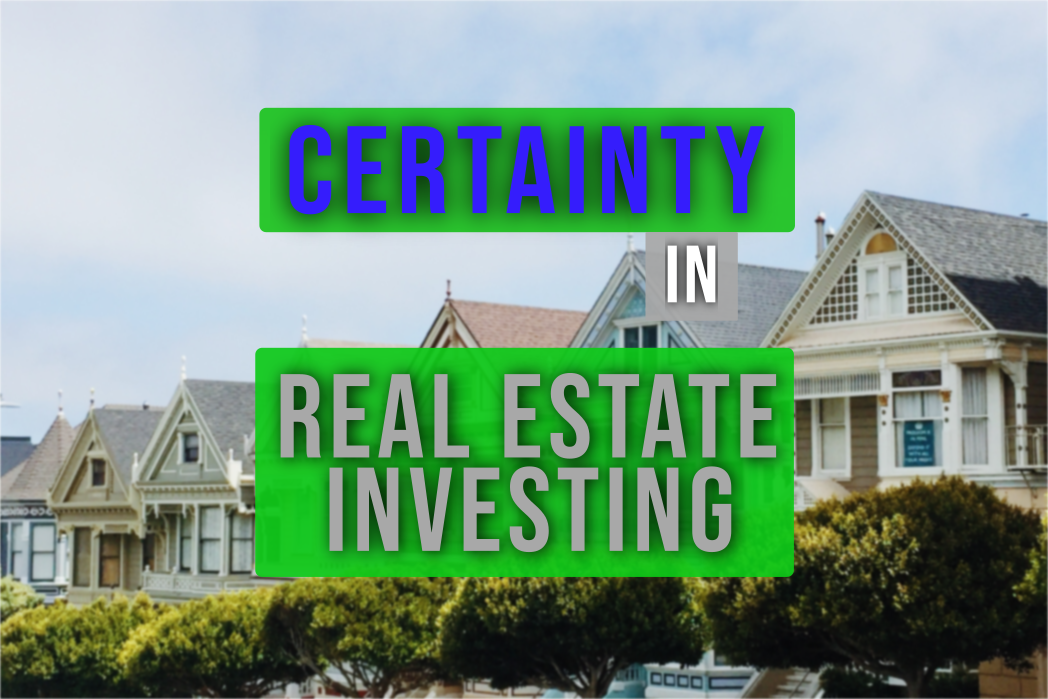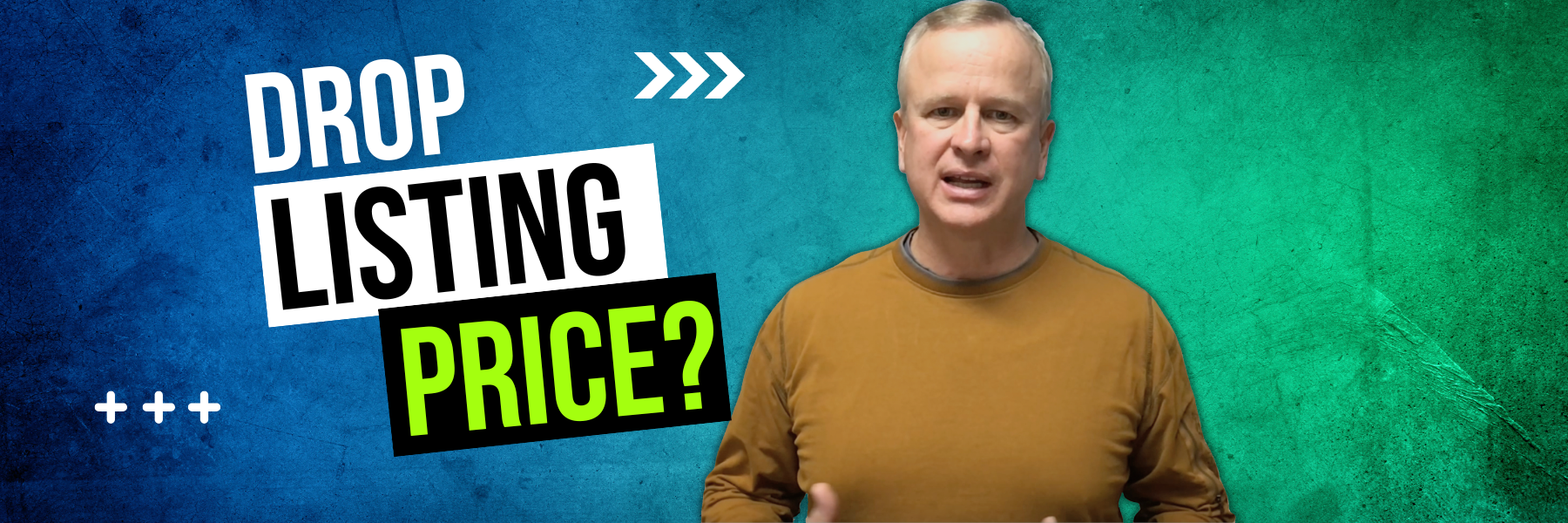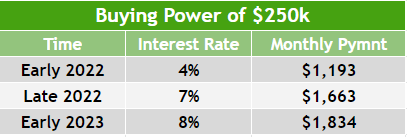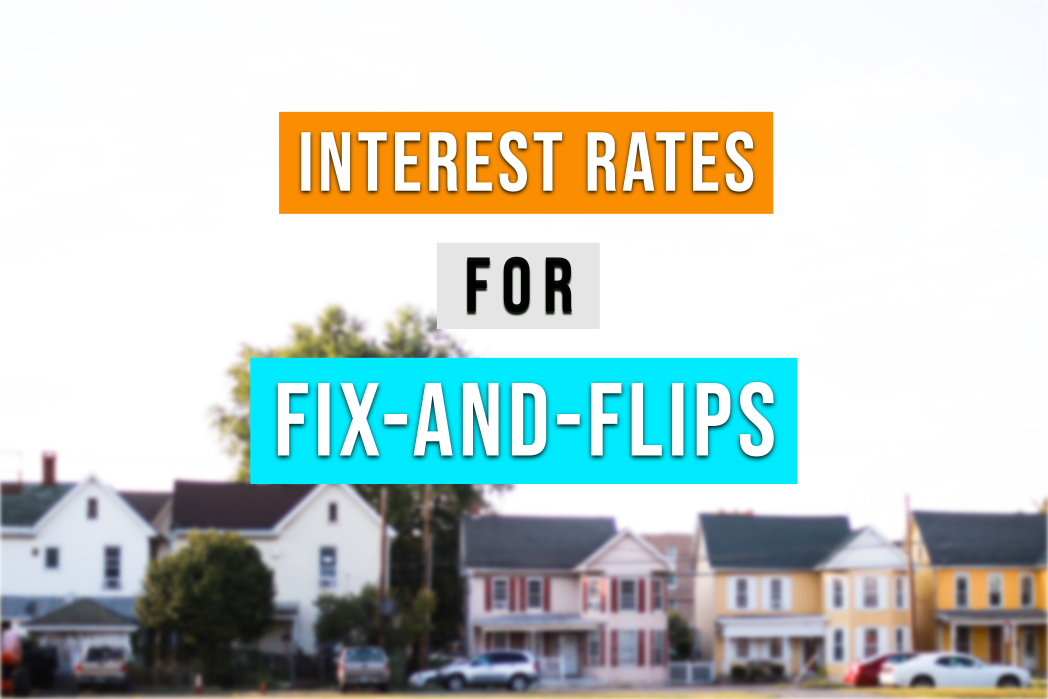What’s worse: Paying money for an unknown amount of time? Or paying with certainty on a real estate investment?
A flip stuck on a market like the current one is a death knell for your profit.
The question is: do you keep paying carry costs in hopes of a higher sell price? Or do you cut your losses and move on in your real estate career?
Here’s our take on the dilemma.
What Is Certainty in Real Estate Investing?
Certainty in real estate investing is about coming up with a conclusion. This conclusion is whatever path:
- Gets the property somehow moving along.
- Offers the least out-of-pocket cost for the client.
- Provides a clean slate to get them back on track to take advantage of the upcoming better market.
Certainty in Real Estate Investing by Taking a Short
In a market like this, you often end up with two options:
- Continue paying carry costs, with no sale in sight.
- Sell at a loss, for certainty about how much you’ll lose and the freedom to move on.
Taking the first option involves high monthly payments for 6-9 months, or longer. Once the end is finally in sight, it’s possible you’ll find out you’ll have to pay even more and take a huge loss anyway.
With the second option, you accept what the market is giving you. You take the short, then you move on. Money will still be lost, but the timeline of the payouts has a clear end. It becomes certain.
The first option is a gamble with the cards stacked against you. The second option is a clean slate to start fresh.
If you’re trying to find the best route to certainty for your property, we’ll go over some examples. You can follow along with the numbers for your own situation. Running these numbers will help you find out if it’s smart to opt for certainty in your real estate investment.
How to Calculate the Certainty of a Real Estate Investment
One client owed (and were paying interest on) $600,000 for their loan. When they first took out this loan in early 2022, they were expecting to sell the property within a month or two for $800,000+.
This property was supposed to be a quick cleanup – get in, get out, and make a quick couple hundred thousand dollars. Then the market changed, especially for higher price point homes in their area.
Now, five months later, they’re desperate to get out of the property.
What Is the Cost of Certainty?
If sold now in the current market, they could get $570,000.
That’s $230k less than they had originally hoped to get for this property – enough of a gut-punch as-is. But to sell for $30,000 less than you owe on the loan itself? Not ideal.
Although selling right now would mean a $30,000 loss for this client… At least that number is certain.
They’ve already spent close to that much on carry costs alone since purchasing the property. If they can’t get a better price for another several months… Which option is more worth it?
Would you rather lose $30k for sure? Or pay dollar signs with question marks and no end in sight?
How Do You Pay for the Loss?
So, say you’re in this client’s position, and you’ve decided to sell for $570k. How do you go about paying off the remaining $30,000?
In this specific instance, we as a lender worked flexibly with our client. Since they were already locked into making payments indefinitely, we trusted them to also pay in a definite amount of time. So we put a term on the remaining $30k for the same payment amount.
Now, the client has the property out of their hands and a much smaller loan to pay off. They will make the same payments as they were on the larger loan, and they could pay the full loan off in 5 months and be done with it.
$30,000 isn’t a little money. Five months isn’t a short amount of time. But paying that much for certainty can beat paying 2x or 3x as much for uncertainty in this market.
What If Your Lender Isn’t Flexible?
Most lenders will be open to working something out with you. They want certainty, too. It does them good in the long-term for you to get this property out from over your head.
Opting for a shorter term loan is a great way for a lender to clear the decks and get ready for the next wave of great purchases.
However, even if your lender is unwilling to work out a shorter term, you still have a couple options for paying off the loan when you sell at a loss:
- Cash – The obvious answer is you pull this cash right out of your own bank account. Not everyone has that luxury (or wants to take that path if they do), so there are a few other options.
- Private money – In a bind like this, the flexibility of OPM is useful. If you borrow money from family, friends, or people in REI groups in your area, you can pay them back at a rate better than they’d get in the stock market or a bank right now.
- Gap funding – You could also do a lien on another property to provide some gap funding. If your original lender won’t do this, we can help.
- Use another lender – If the property’s original lender won’t agree to a short-term loan, someone else might.
Read the full article here.
Watch the video here:






